
The most important relationship I have in my life is the one I have with nature.
She and I have a deep emotional and physical connection. It is not mutual. While I can’t live without nature, she can certainly live without me.
Living in a city for too long suffocates my soul. Dark concrete, the smell of sewage and pigeon turds at every step make me long for my days spent horseback riding through aspen groves in the wilderness of Colorado.
To make the smell of urban decay bearable, my mind wanders to the scent of slightly acidic thunderstorms building up in the high altitudes of the Rockies. Disinterested mellow dogs on leashes and people passing me without acknowledging my existence in the city make me want to live in solitude in a cabin in the woods.
A few weeks ago, when I was fulfilling my twice-a-year need for a road trip, I thought a lot about the relationship we have with nature. During the time I was looking for a multi-million dollar treasure right on the border of Yellowstone National Park, these questions wouldn’t stop haunting me: What does seeing Yellowstone mean to tourists that visit it? Do we come here to check one of the wonders of the world off our list? Or is it to take a selfie next to a bison despite all the warnings not to approach wildlife?
Yellowstone was the first designated National Park in the world. It was founded in 1872, before Wyoming, Idaho, and Montana were states. The numbers of visitors of the park have been increasing annually. The park reached a record number of 4.2 million visitors last year.
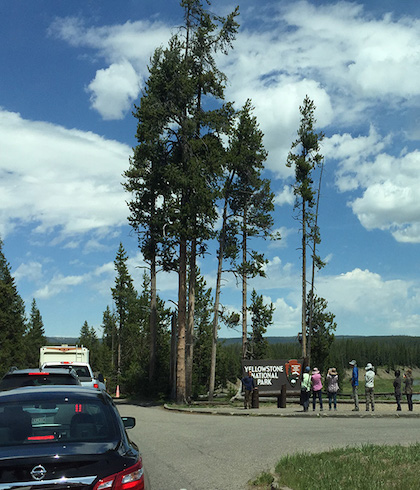
I’ve visited Yellowstone three times now, but I decided on my last visit this past summer that I am never going back again. Being there is not any different than living in a big city. There are traffic jams everywhere because visitors randomly stop in the middle of the road. Mostly because they see an animal and want to take a photo of it or with it.
Waiting in a line for the restrooms is common. If we want to see Old Faithful erupt, then we better get there early to find a parking spot. We have to be careful when we are looking for a place to sit because someone might yell at us that the spot is already taken. In my observations, visiting Yellowstone is not any different than going to a football game. The mentality of the visitors is the same: We pay to get in, therefore we are going to get what we want out of the visit.
It is not nature that gets the $30 fee we pay. All nature wants is to be respected. The free roaming wild buffalo want to be left alone. They are an indigenous animal population in the picturesque river valleys and endless green meadows of Yellowstone. Unfortunately, their grazing time in the warm months of the year is constantly interrupted by hundreds of tourists driving through the park. The Yellowstone bison put up with the chaos until winter comes around and some of them migrate across the boundaries of the park in search of winter habitat and spring calving areas. That is when they get brutally slaughtered.
The Buffalo Field Campaign, an organization which is trying to protect the last wild bison, explains the senseless reason for hazing, shooting, or slaughtering the buffalo that step across a line into Montana, Idaho, or Wyoming:
“The undocumented claim by the state of Montana and Yellowstone National Park is grazing cattle in the buffalo’s range are at risk of contracting brucellosis—a disease introduced by exotic cattle to native elk and buffalo before 1917. Buffalo calves captured from the wild were “mothered with domestic bovine cows” and pastured with cattle that were brought into Yellowstone to feed park tourists.
Recent investigations of brucellosis transmission to cattle in the Yellowstone ecosystem indicate that elk, and not buffalo, are the source of infections in Montana, Wyoming, and Idaho.
There has never been a documented case of wild buffalo transmitting brucellosis to livestock.”
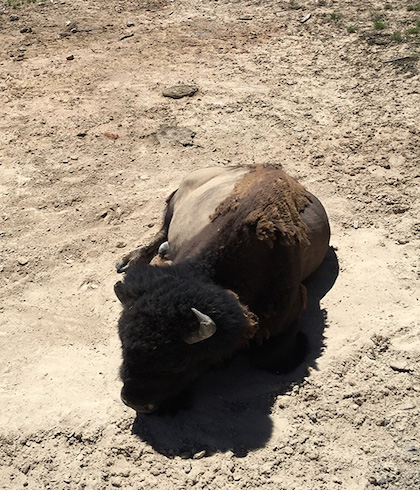
During the winter of 2016/17, the Interagency Bison Management Plan directed to cruelly take 1,300 wild buffalo lives. The buffalo were slaughtered because they followed their natural instinct and migrated to ranges following the Yellowstone and Madison Rivers. Little did they know, they approached a state line and got punished for it. Not only did they approach an invisible line, they also came dangerously close to Montana’s cattle (which only make up less than one-quarter of one percent of total U.S. beef production).
Every year the Interagency Bison Management Plan and Montana Department of Livestock inspectors are capturing wild buffalo in a slaughter program that has taken 6,000 lives since 2000.
The Interagency Bison Management Plan is funded by federal and state agencies, meaning that we as taxpayers are forced to support and invest in the destruction of the last wild buffalo herds each time they approach the state line between Wyoming and Montana.
We can’t directly decide where our tax money goes. However, we can decide what kind of food we buy. I am not a vegetarian or a vegan, but researching the plan that the U.S. has for our last wild buffalo made me reconsider my dietary decisions. Beef raised in Montana, Idaho, or Wyoming is definitely the first thing I am crossing off my grocery list forever.
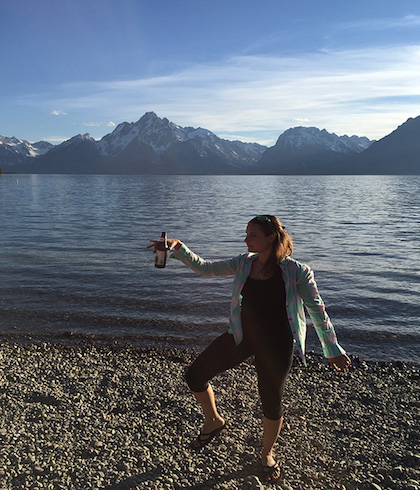
If you don’t like what you’ve just read, then it’s time to act. Here are a few steps we can take to establish a more mutual connection with nature:
1. Let’s think about the connection we have with nature. Do we like jogging in a nearby park? Do we love going camping on the weekend? Or taking our closest ones to Yellowstone National Park for a family vacation?
What does nature give us?
2. Imagine that nature could talk. If she was in an interview on a national television program and she was asked an opinion about us, what would she say? Would it be something like: “Dick just uses me all the time to take pictures and post them on Instagram, but I never get anything in return.” Or would it be more like: “Jane is a remarkable friend. She goes out on hikes and picks up plastic bottles all the time. On top of that, she even puts them in the right recycling bin. I love her, and she is always welcome.”
What do we give to nature? Are you a Dick or a Jane?
3. Let’s remember that big changes start with small steps. How we as individuals treat nature does matter. Even by setting a good example, we will automatically pull in people around us.
I used to be indifferent about recycling until my mom got two extra bins and kept repeating what goes in each bin. My husband used to not have a recycling bin at his house. Since we’ve been living together, our recycling bin is always overfilled.
4. If you’d like to help the wild buffalo, I strongly advising you not to put them in your SUV like this guy did. You can contact the Buffalo Field Campaign to see how you can help.
I try to make nature think she needs me so we can create a deeper connection, something that’s more mutual. So I pick up plastic bottles and cans on my hikes, preach about recycling, and leave no trace. The only thing I leave in nature is a sincere thank you and a promise that I’ll be back as soon as I can.
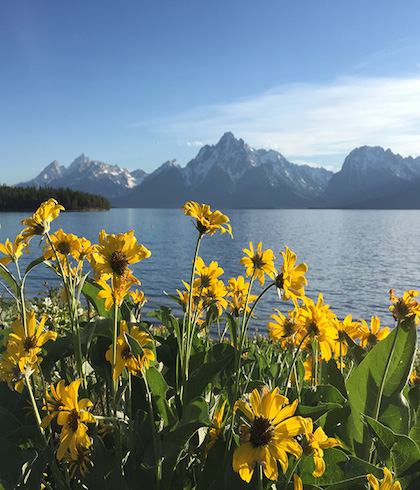
~
~
~
Author: Eva Gisburne
Images: Author’s own
Editor: Travis May


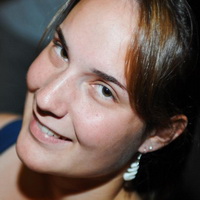



Read 4 comments and reply